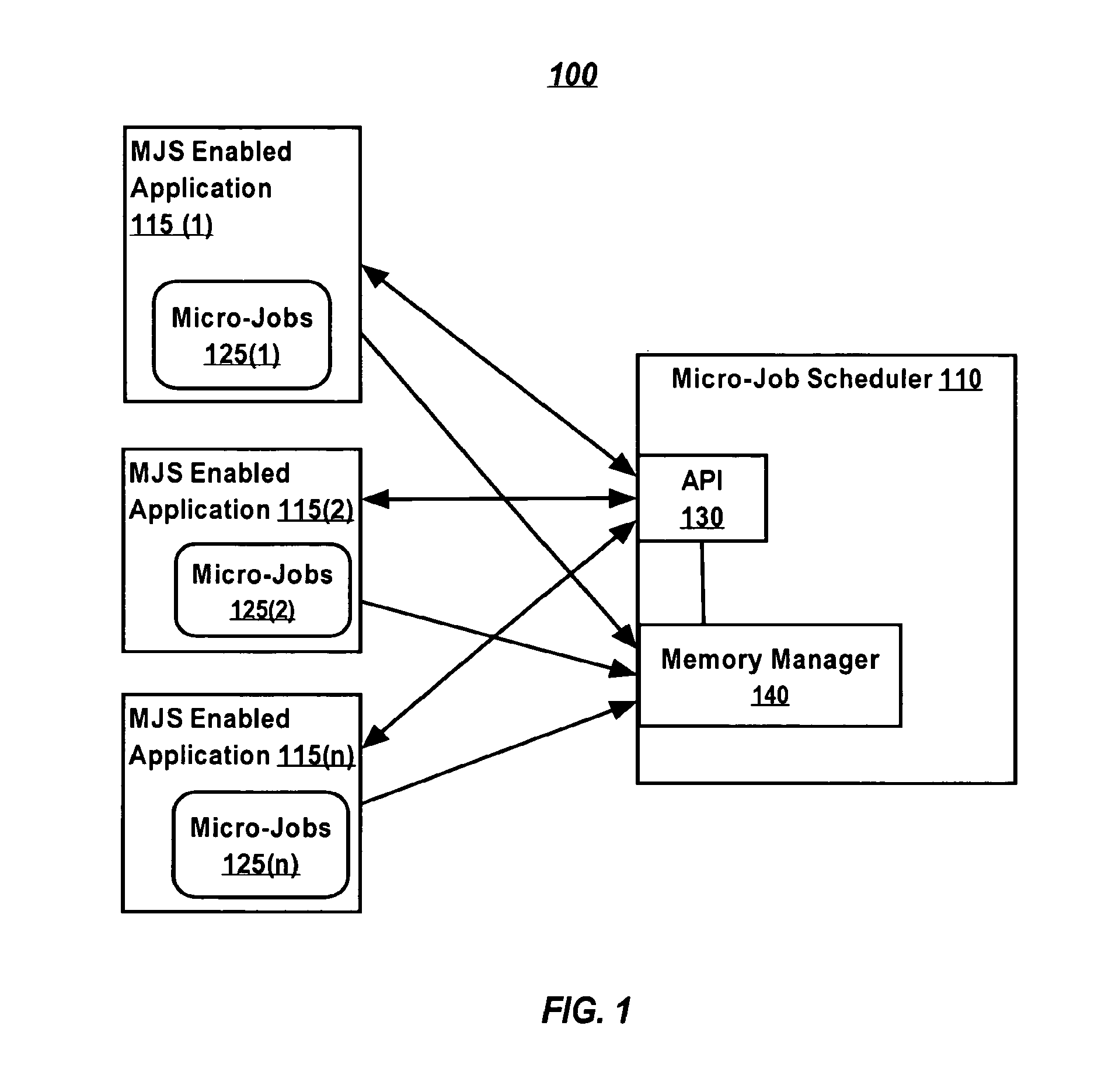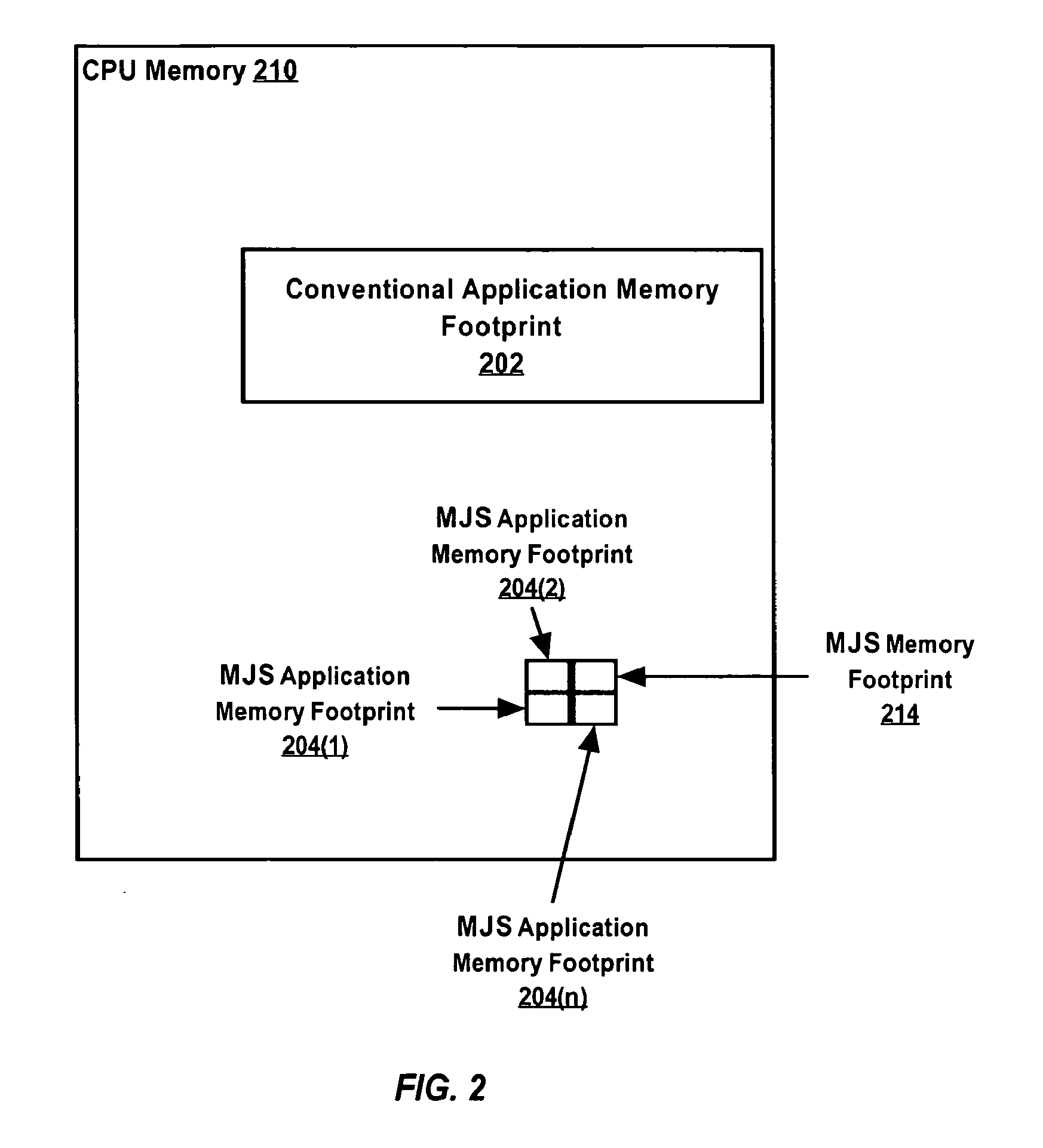Scheduling computer jobs for execution
- Summary
- Abstract
- Description
- Claims
- Application Information
AI Technical Summary
Problems solved by technology
Method used
Image
Examples
example api
[0048]An embodiment of the present invention is an API for allowing an MJS-enabled application to interface with an MJS. The example API has the following resource threshold parameters for CPU, disk, and network.[0049]CPU Utilization threshold[0050]Pending Disk I / O Count threshold[0051]Network Utilization threshold
[0052]The above parameters can be specified for each micro-job. In other words, different micro-jobs can be assigned different resource threshold parameters. For example, for a micro-job that uses the network, a network threshold may be used. However, the network threshold could be zero for micro-jobs that do not use the network. Thus, fine-grained resource management is provided for, in accordance with an embodiment of the present invention.
[0053]As a particular example, the MJS-enabled application can request that a particular micro-job be executed only if the CPU utilization is below 50%, and the I / O Disk Utilization is below 40%, and network traffic is below 60%. Any c...
PUM
 Login to View More
Login to View More Abstract
Description
Claims
Application Information
 Login to View More
Login to View More - R&D Engineer
- R&D Manager
- IP Professional
- Industry Leading Data Capabilities
- Powerful AI technology
- Patent DNA Extraction
Browse by: Latest US Patents, China's latest patents, Technical Efficacy Thesaurus, Application Domain, Technology Topic, Popular Technical Reports.
© 2024 PatSnap. All rights reserved.Legal|Privacy policy|Modern Slavery Act Transparency Statement|Sitemap|About US| Contact US: help@patsnap.com










